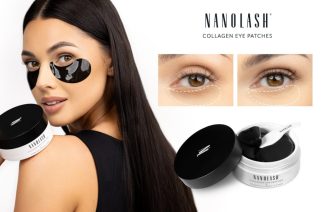A lot has already been said about hair care with oils, and yet women still have doubts and do not know how to properly apply oil to their hair. Here are some tips to help you choose the right care.
In fact, hair oiling can be done by anyone and on all types of hair. yes, it is possible, mainly because the treatment can be modified accordingly to your needs: you can either blend various oils or use various methods of application. There are numerous possibilities which might be a bit overwhelming for beginners.
INSTRUCTIONS: Hair oiling step by step
Only a properly conducted treatment promises positive effects. You have to prepare for it because dissatisfaction with the effects of oiling is usually the result of your own mistakes. How to prepare for oiling hair? Here is a short instruction consisting of three essential steps that should help you perform hair oiling the first time.
1. Determine your hair type
It is worth pointing out that hair is built the same way – but only in theory. Even hair on the same head might differ from each other. Professionally, it is called ‘different types of porosity’. Hair can be low, medium and highly porous. Hair porosity is a reflexion of the level of damage. It is affected by the outer hair layer called the cuticle, which determines how easily moisture and oils pass in and out of your hair. This means that depending on the porosity, various hair types require different types of oils. Therefore, before you start hair oil treatment, make sure to determine the type of your own hair. There are multiple ways to do it, the easiest and fastest one is to take an online test. This piece of information is extremely essential and will be required later on.
2. Choose the right type of oil
Finding an oil which particles will be matching the structure of our hair is the key to success. It will be faster absorbed so it won’t work only on the surface but also from within. Properly matched oil will not weigh it down. Hair porosity is a helpful tip because:
- low porosity hair is fond of butter, eg shea, mango or coconut oil,
- medium-porous hair gets along with, for example, jojoba oil, sunflower oil, pumpkin oil,
- high porosity hair requires, for example, evening primrose oil, argan oil, almond oil.
3. Choose the right method of hair oiling
The last step concerns selecting the method of hair oiling. It is a slightly less significant matter than matching oils to the hair structure, nevertheless, it is still worth mentioning. High porosity hair – damaged will be reinforced faster if we go for hot oil treatment or leave the oil in the hair throughout the night. When it comes to thin and less demanding hair, oiling with a mist will be enough. Also, you can apply a bit of the oil to the hair ends before styling, to prevent damage.










Leave a Reply